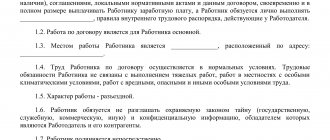The work of hired workers in different spheres of economic activity requires completely different schedules of their involvement in the work process. If office workers work, as a rule, under conditions of a five- or six-day work week, then, for example, the service sector requires a completely different regime. A schedule is drawn up for each employee, which may include night work, shifts, and “floating” days off. In the meantime, it is impossible to draw up a schedule, guided only by the own wishes of the employer and employee - there are a lot of rules that are enshrined in labor legislation.
What is a work schedule
The work schedule or schedule is usually discussed in the context of Article 103 of the Labor Code of the Russian Federation, when the duration of the production process exceeds the normal duration (8 hours during the day and 40 hours during the week) of work.
Let's take a metallurgical plant that operates around the clock.
Foundry workers or rolling mill crane operators need to constantly maintain technological processes. And for them, management will have to build a shift schedule, when the first, second and third shifts, overlapping each other, ensure the continuous technological process of manufacturing products. The employer develops the regime independently and approves it by local regulations.
But, for example, it makes no sense for an accountant to be present at the enterprise for 24 hours. For him and the rest of the administrative employees, a single shift is established - a five-day week with two fixed days off.
Drawing up a duty schedule template is the prerogative of department heads, who are required to plan the activities of their subordinates and keep records of the time they work constantly. To do this, you can print out the monthly template and fill it out manually. Another option is to fill it out on your computer in Excel or another program.
For those who work five days a week or six days a week, there is no need to draw up a work schedule; the work schedule for such employees is prescribed in their employment contracts. All the employer needs is to keep track of their working hours.
What are there
In conversations about what kind of work schedules there are, the following formulations are found:
- sliding;
- flexible;
- individual;
- free, etc.
However, all these expressions refer to the recording of working time, and not to the shift mode of activity, including when employed on a rotational basis. Thus, the mode is:
- permanent - with a five-day or six-day working week with fixed or sliding days off;
- shift - when professional activities are carried out in the order established by the employer’s regulatory act.
How does a removable one differ from a regular one?
Ordinary
The employee works within strictly designated hours: from Monday to Friday, from nine in the morning until six in the evening, with a lunch break from 13.00 to 14.00. There are no options here - every day, every month and all year the employee comes and leaves at the same time. For this category of employees, enterprises have ready-made tables for filling out work schedules within the established time frame. But such a schedule is suitable only for those employers who do not have a technological and production need to complete tasks outside the normal time frame. As a result, the organization does not need to keep total records of staff time, since the normal working week for employees will not exceed 40 hours, which complies with legal requirements.
Removable
To understand how to make a work schedule for a month in Excel (or any other program), remember our example about a metallurgical plant. The employer, due to its production and technological characteristics (continuous production or provision of services to the population), has a need to perform professional activities either around the clock or for a period of time that significantly exceeds the normal duration (a person can work 40 hours in a couple of days, not in a week) , in connection with which a shift of workers is established.
ConsultantPlus experts discussed how to draw up a work schedule with summarized work time tracking. Use these instructions for free.
Scheduling
| This section of the article has not been written. According to the plan of one or more Wikipedia contributors, a special section should be located in this place. You can help by writing this section. This mark was set on February 29, 2021 . |
The mathematical branch of operations research deals with theoretical developments in the field of scheduling.
Scheduling classes at an educational institution
The basis for scheduling classes is scheduling theory. Scheduling theory is well studied and has been described in many works since the 1960s. It is widely used both in organizing the work of enterprises and is applicable for educational institutions[3][4][5].
The class schedule, from the point of view of formalization in the theory of schedules, is a determination on the time scale of the place where classes will be held in given disciplines of study with the fulfillment of the requirements for them. Requirements are formed by participants in the educational process and governing documents.
The initial components of this process are:
- P -
training streams, which include from one to several training groups, or subgroups that are formed by dividing one or more groups (stream) into separate units. - T
- teachers, who are the main mechanism of influence on learning flows. Unlike classical approaches in scheduling theory (one mechanism - one operation), in this situation there may be situations when several teachers can unite into one “mechanism” to conduct a lesson. - D
– training disciplines, the basis of which is a thematic training plan, including various types of classes. - A
- classrooms, which are the place for conducting classes (performing operations). In many existing theories and systems that implement scheduling, this participant is removed from the overall task in order to simplify the system.
Setting a planning task
In many works, it is formulated as an enumeration of all possible options for all initial data of the planning process (Cartesian set R = {P*T*D*A*z}, where z is the periods of the lesson (date and pair) with finding the optimum according to the compliance criterion given requirements for the schedule. With this approach, a conclusion is made about the complexity of scheduling, since when solving it, an exponential increase in the number of combinations appears, which makes the problem NP-complete.[3]
However, this approach is not always correct, since already in preliminary preparation for planning, this combination is reduced by combining the teacher, stream, audience (or possible audience) and the lesson being conducted according to the thematic plan into one planning unit - often called a lesson.
If we consider planning in this case as the process of determining a time period for a specific activity, then the problem becomes classic from the point of view of scheduling theory. That is, for a given number of works (disciplines) and operations (discipline classes), determine such time periods so that the compiled schedule meets the specified optimality criteria and requirements.
In order to draw up a schedule, the following must be determined:
- Disciplines and classes on them (works and operations) - the basis is the thematic plan for studying the discipline.
- Teachers and audiences (machines and location of machines) for conducting classes. In most cases, teachers (rigid binding) and possible audiences (floating binding) are identified for all classes in thematic plan.
- The procedure for completing classes (operations on machines). Currently, this item is omitted when drawing up a class schedule on the basis of the acceptable assumption that it is not critical when mastering the materials of the discipline. That is, from the point of view of scheduling, the order of classes will be random.
- The schedule evaluation criterion is a certain parameter calculated from the resulting schedule, showing its optimality from given points of view. For the educational process, the criterion for assessing the schedule is a multi-parameter function, including both discrete mandatory requirements and recommended optimization requirements. In many works, this function is decisive from the point of view of creating an optimal schedule. It is often used as a function of the sum of fines, which allows one to quite simply assess the optimality of the compiled schedule.
To automatically create a schedule, it is enough to set the first two points. The fourth point (evaluation criterion) is implemented based on the experience of operators when creating a schedule. An important point for automation is the creation of an approach that would allow the operator to create a schedule for selected activities in a minimum time with control at the program level or the operator visually monitoring the fulfillment of specified requirements. In fact, in this case, solving the problem comes down to finding the best interface for the program and is a purely engineering task. To facilitate the operator's work at the first step of automation, a dynamic programming algorithm can be used. That is, the order of scheduling for disciplines is determined in such a way as to divide the planning process into subtasks, scheduling for which will be relatively simple. The main task in this case will be to determine the criterion for ranking disciplines.
For this approach, you can use the following criterion[6]:
Kopt(i,j)=Wrd(i)/Wmo(j)
, Where
i — teacher (machine) number, ranging from 1 to M;
i — discipline (work) number, ranging from 1 to N;
Wrd - the number of classes (operations) that need to be carried out in the selected discipline (work);
Wmo - the number of classes (operations) that a teacher (machine) can conduct over a planned period of time, taking into account the restrictions imposed on the performance of classes in a given discipline and teacher.
The ranking of disciplines for scheduling is performed in decreasing order of the resulting criterion.
In scheduling theory, this criterion is often referred to as the time reserve for completing work - the difference between the amount of machine time and the amount of time for work[5]. In this case, it is proposed to use the relationship of these variables, which allows not only to arrange disciplines in order of planning, but also to check the possibility of planning work using the formula:
K j = S um ( K opt ( i , j ) ; N ) < 1 {\displaystyle Kj=Sum(Kopt(i,j);N)<1}
, where N is the number of disciplines for a given teacher.
If the resulting indicator is greater than 1, this means that the teacher does not have enough time to conduct classes. In this case, it is necessary to reduce the restrictions on conducting these classes, or replace the teacher.
The lesson schedule compiled using this algorithm will be only partially optimal. But in most cases of modern approaches to scheduling classes, the resulting schedule is a kind of compromise when conducting classes, obtained on the basis of the experience of operators and the requirements for conducting classes.
When implementing this approach, it is necessary to use an iterative method. That is, when drawing up a schedule, after each discipline, the work is re-ranked.
If a situation arises when planning is impossible for the selected next discipline, rescheduling is performed. of the Kopt(i,j) indicator is selected as the rescheduled discipline.
.
To solve the problem of restrictions imposed by the components of the planning process, it is possible to use a recurrent algorithm for adapting the planning process. It consists of obtaining, based on existing previous schedules, indicators that make it possible to specify a priori information on the planning process based on existing experience. That is, in this case, organize feedback for the planning process on previous planning periods, which will act as a posteriori standard for scheduling classes.
Why is it needed in an enterprise?
The law obliges the employer:
- on the one hand, create the same working conditions for all employees;
- on the other hand, to exclude any discrimination on any grounds.
This document simultaneously allows you to ensure:
- normal functioning of the enterprise (if technological and other conditions require it);
- compliance with legal requirements when exceeding normal working hours.
That is why the employer organizes alternating shifts: the one who worked the morning shift today, tomorrow works the afternoon shift, then the person has a day off. Then he will go into the night and again the day off. Then again on the day, etc. There are no exceptions for anyone who is busy in this mode. Here is an example of what a monthly work schedule looks like in the form of a table with days of the week in Excel for three-shift work.

Another example is a sample work schedule for a store whose management has established a shift schedule for four salespeople. The facility's opening hours are from 9 a.m. to 9 p.m.; there is no night service.

Read more: How to create a shift schedule
Conditions

In any case, the employer must keep in mind that overtime work can be assigned to an employee only with his written consent. As a matter of compulsion, it is allowed to call workers only in emergency cases, for example, to eliminate the consequences after a man-made accident. It is also worth noting that, in accordance with Article 119 of the labor legislation in force in the Russian Federation, such work is compensated by the employer: the employee has the right to take additional paid leave or receive additional payment according to the double tariff.








